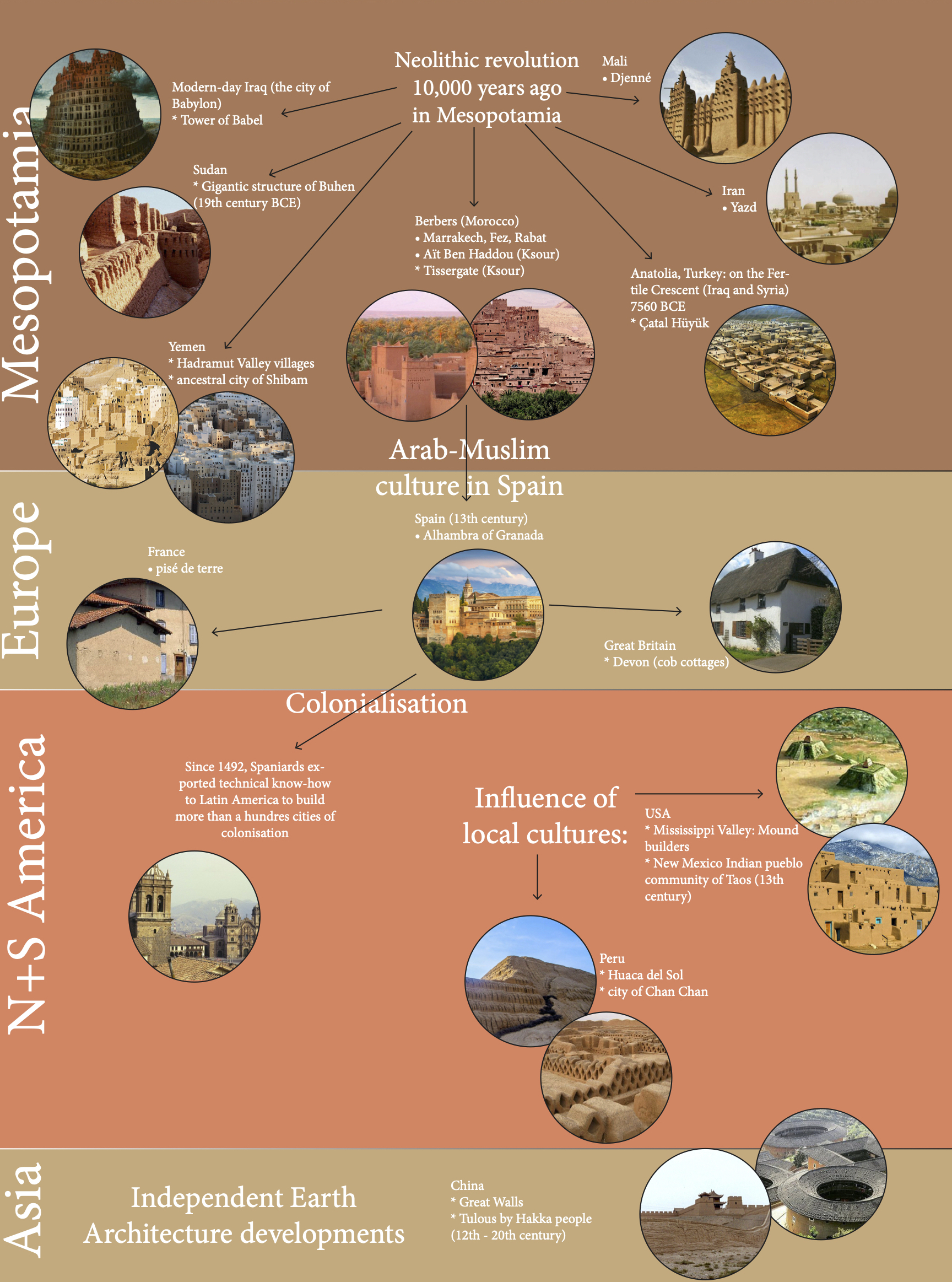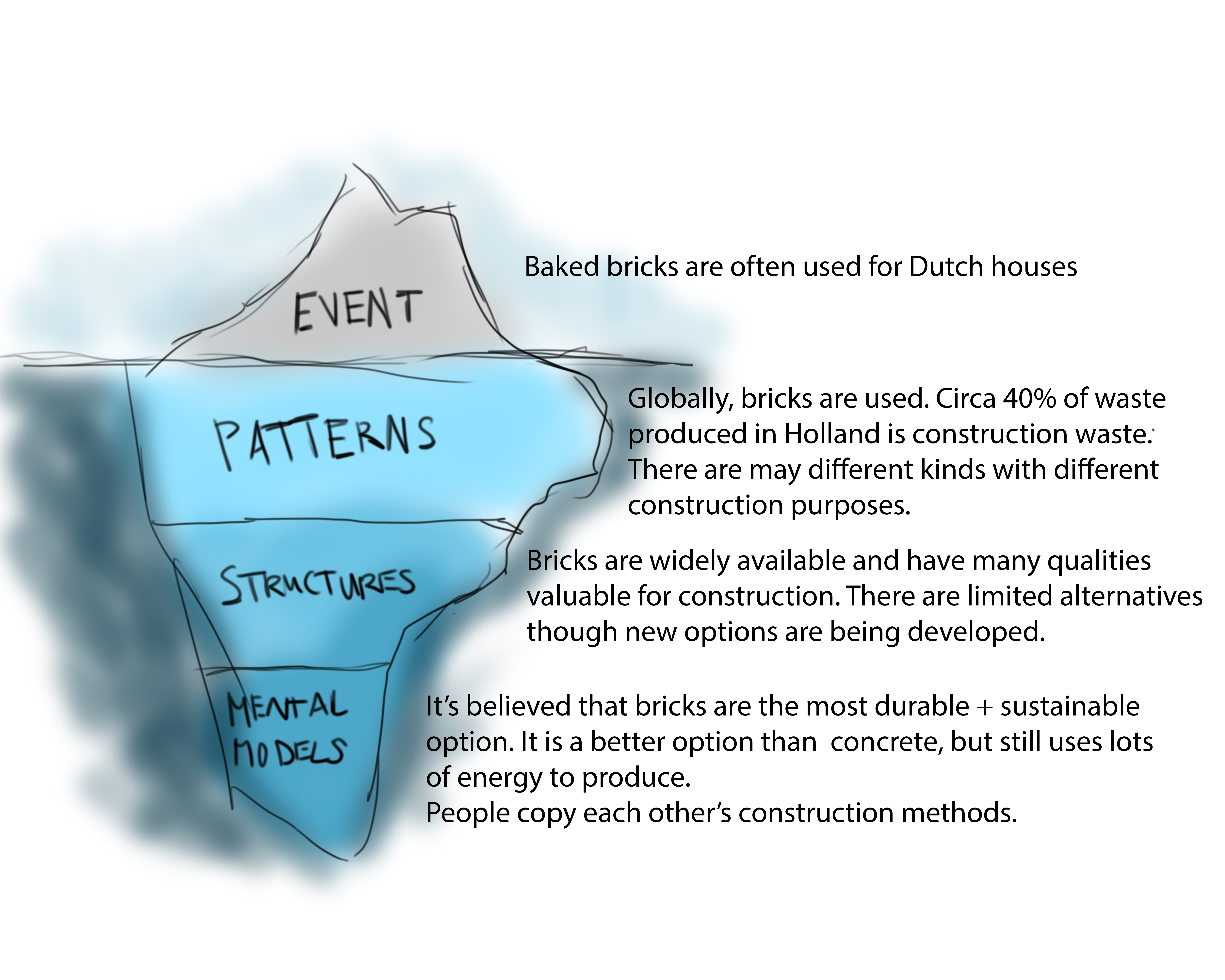Home
Theory


Soil has been used as a building material for millennia. Ten thousand years ago, during the Neolithic Revolution in Mesopotamia, humans started building structures like the Aït Ben Haddou in Morrocco. In result of that, the Arab-Muslim culture spread the knowledge to Europe by building the Alhambra of Granada in Spain. This resulted in the Spaniards exporting technical knowledge to Latin-America by building more than a hundred cities of colonisation. Despite this enormous spread all over the world, and many years of Earth Architecture being practiced, traditional and contemporary art of raw earth construction are both absent from even the most recent books on architecture, disregarding its importance, and its true diversity, quality and modernity.
There are three specific qualities of Earth Architecture I’ve explored during my practice. I focused on: sustainability, isolation qualities and social impact. Nowadays, 40% of the waste produced in Holland is construction waste. For my research, I compared soil bricks to commonly used baked bricks. Overall, it’s to say baked bricks are a relatively green product. Research done by Engineer company Tauw showed that using baked bricks instead of concrete tiles saves 237.000.000 CO2 (per 100 years, if used for the Amsterdam pavement). Though this sounds promising, we should still realise that a thousand bricks still cause 130,1 kg CO2 emissions. It takes a lot of energy to produce bricks as they’re being baked. Raw soil allows both a ‘baked’ and ‘raw’ treatment. The last treatment uses solar heat to dry and harden earth. It doesn’t require a phase of industrial processing and needs much less transportation than baked bricks, as the earth is extracted on site. If used without any industrial additive (e.g. cement), soil is a fully recyclable material. The article ‘The Role of Soil in Architecture’ by Mohsen Vafamehr emphasizes the environmental impacts of soil as a material, and explains the insulating qualities. Soil has an insulating capability against heat and cold. It provides cool air in the summer and the warm air in the winter by balancing the layers of humid atmosphere inside the building. This then saves energy in the building and results in a durable product.
Using raw earth as a building material helps communities to realize their most essential needs: pleasant, healthy, economical and sustainable housing. Reading designs by the pluriverse by Arturo Escobar inspired me to connect my project socially. He addresses four points regards to the relationship between design and social change.
Design should....
... support individual life projects
... link local and global
… create for collaborative social change
… be in an international conversation, and connect both exports and non-experts
My project plan involves a community making soil stones together. It’s a direct way of creating awareness for the creation of our own habitat, which links to more conscious living (1). As this method has been done globally, it can be done all over the world. It stimulates the use of on-site materials (2). Using these on-site materials with a local community, serves to build together on a communal place (3). It’s a method which can be practiced by anyone, but the accompaniment does need expertise by Earth Architects. (4). In Bioregioning, John Thackara talks about a metabolic rift where Western cultures have lost a sense of connection between humanity, place and nature. Meanwhile, a cultural yearning to reconnect is widespread. Soil is a natural element, thus links back to the primary nature and attributes of man. Building your own communal area contributes to man’s physical and spiritual health. It is a major contribution to social wellbeing, especially as it proves compatible - today and historically - with the expectations of all social classes, from the most affluent to the most deprived.
| Sources offered by the Study Guide |
Thackara, J. Bioregioning: Pathways to Urban Rural Connections (2019)
Escobar, Arturo. Designs for the Pluriverse: Radical Interdependece, Autonomy, and the Making of Worlds (2018)
| Other sources |
Vafamehr, Mohsen. The Role of Soil in Architecture (2017)
The Architectural Review: Inhabiting the earth: a new history of raw earth architecture (2020)
https://www.architectural-review.com/essays/inhabiting-the-earth-a-new-history-of-raw-earth-architecture/10046161.article
Trouw: Duurzaamheid & Natuur | Baksteen is Groener dan Beton (2010)
https://www.trouw.nl/duurzaamheid-natuur/baksteen-is-groener-dan-beton~b6ac0291/
Architectuur maken: Zelfbouw Rotterdam (2020)
https://architectuurmaken.nl/projecten/zelfbouw-rotterdam/